If you're planning on swimming with a snorkel, you'll need to know how to attach it to your swimming goggles. This can seem like a daunting task, but it's actually quite simple. Can you go snorkeling with swimming goggles you can breathe in? If so, then you have come to the right place. In this article, Tavik will be providing you with a full guide on How To Attach Snorkel To Swimming Goggles and masks.
3 Issues When Snorkeling With Goggles
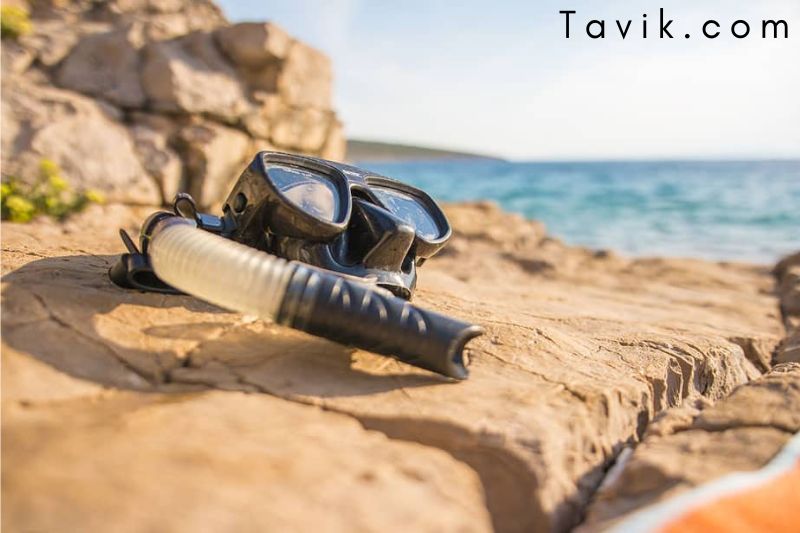 Consider three issues if you plan to snorkel while wearing swimming goggles.
Consider three issues if you plan to snorkel while wearing swimming goggles.
1. Taking a Deep Breath Through Your Nose
The first issue is that since swimming goggles do not cover your nose, you must remind yourself not to breathe through it. Your nose is covered with a snorkel mask, so even if you tried, you wouldn't be able to breathe through it. You could focus on breathing exclusively via your lips, but this is significantly more difficult than it seems after a time! Wearing a nose clip like this one from Amazon is a better alternative. Swimming goggles with a nose clip aren't as comfy as snorkeling masks, but they do the job.
2. Putting on the Goggles and Snorkel
The snorkel's attachment to the goggles is the second issue. Swimming goggles have narrower straps than snorkeling goggles. This means the snorkel is more likely to flop about and drag the strap away from your face, perhaps dislodging the goggles and letting water in. Some swimming goggles with larger straps will work. However, a snorkel clip may be required to secure the snorkel to the goggles. You could also use a strap from a snorkeling mask, such as this Cressi strap, which is available on Amazon, to replace the strap on your goggles. The fit won't be ideal, but based on the Amazon page's Q&As, you should be able to make it work. Another option is a swimmer's snorkel, such as this one from Amazon. These are snorkels with a built-in strap for use with swimming goggles. The disadvantage of these snorkels is that they travel down the center of your face instead of the side of your head. This does restrict your eyesight, which isn't great for snorkeling. If you truly want to use a snorkel, there are definitely ways to connect a snorkel to swimming goggles. Still, none of them are nearly as nice as a true snorkeling mask.
3. It's impossible to equalize pressure.
The third issue is that you can't equalize the air pressure in swimming goggles while diving underwater. When diving underwater, the pressure differential causes your goggles to suffocate against your face as you descend. This might cause major harm to your eyes in the long run. Don't go deeper than a few feet if you're snorkeling with goggles. The difference with a snorkel mask is that since it covers your nose, you can softly exhale through your nose when the pressure changes, filling the mask with air and balancing the pressure. This isn't an issue if you're simply interested in snorkeling on the surface. However, if you really want to plunge down, there isn't a way, and swimming goggles aren't going to cut it.
Why Do You Want to Wear Goggles When Swimming?
I've discovered three typical reasons why someone may use swimming goggles rather than a snorkeling mask. 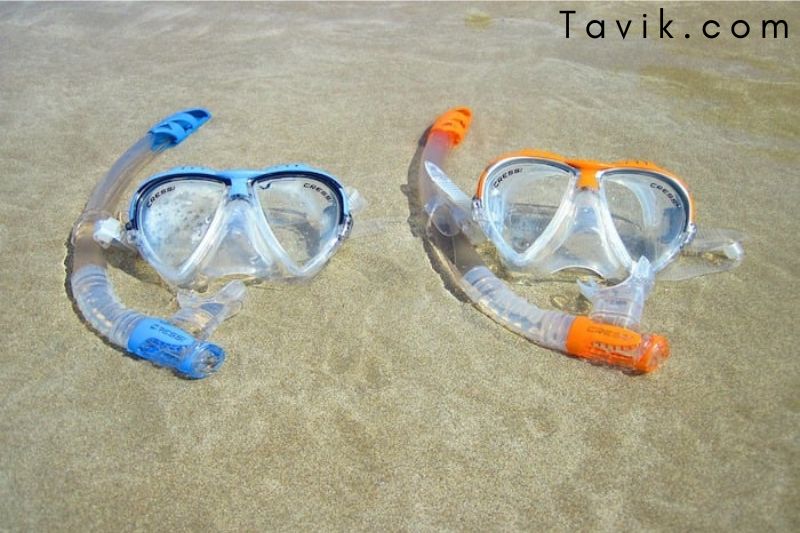
1. You Want To save money
The first reason is simple: you want to save money. If you already own a set of swimming goggles, all you need to do now is purchase the snorkel itself. While this may be true, if you want to have even a half-decent experience, you'll probably need to invest in additional equipment, such as the strap or swimming snorkel I mentioned before. As a result, you may not wind up saving any money at all. Another option is to rent a snorkel mask. If you're heading to a snorkeling location, you'll probably be able to rent snorkeling equipment. If you decide to wear swimming goggles with snorkel, make sure you go through the issues in the preceding section, so you're prepared.
2. You've grown a mustache
When you use a snorkeling mask with a mustache, the mask will certainly not have a watertight seal around your nose, allowing water to flow in. If you have a mustache, swimming goggles are a good solution and will cure the issue. However, you will need to consider the issues I mentioned before. There are a few additional alternatives as well:
- Full-face mask: Full-face masks work great if you have a mustache since the seal is around your face rather than beneath your nose.
- When using a snorkeling mask with a mustache, silicone grease (link to Amazon) applied to your mustache may assist in establishing a seal.
- A more in-depth guide about snorkeling with beards and mustaches may be found here.
3. You already own a pair of prescription sunglasses.
If you already have prescription swimming goggles, it's logical that you wouldn't want to spend more money on a prescription snorkeling mask. Wearing your prescription goggles is probably the best solution. Still, you also have contact lenses and a DIY prescription mask to consider. In our guide to snorkeling for glasses wearers, you can learn more about making a DIY prescription mask and your other alternatives.
Goggles and Snorkel Masks: What's the Difference?
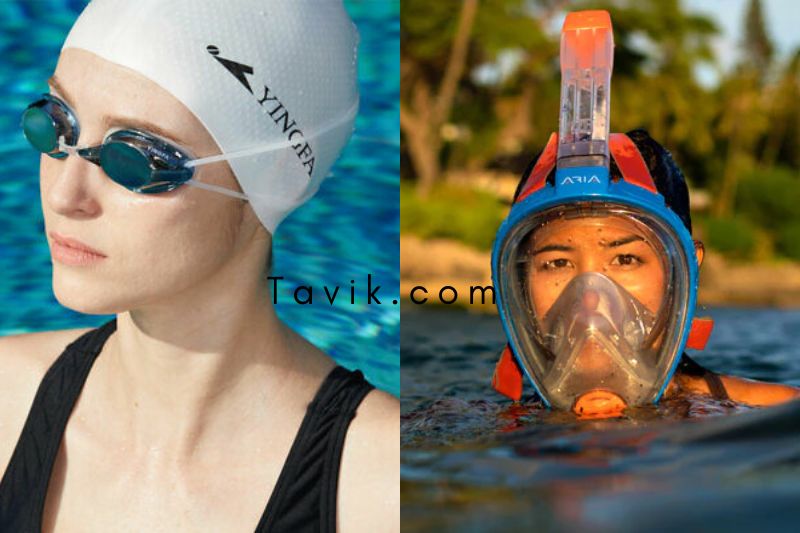
- Keeping a watertight seal is essential.
- Putting on a nose clip
- Snorkeling at a deeper level
- Increased field of view
- Maintaining a watertight seal
Snorkel masks are designed to maintain a watertight seal at all times. Some enable you to swim hundreds of meters under the sea's surface. Even full-face snorkel masks will keep the water out when you're a few meters below the ocean's surface. Goggles aren't supposed to be used when snorkeling, so make sure you choose a pair that can form a perfect seal around your face. You must also consider that you will need to link your snorkel to the strap. Your snorkel will not remain in place if you use cheap goggles with a weak strap, so invest in the finest snorkel goggles you can find.
Wearing a nose clip
No matter what you're doing underwater, any snorkel mask will keep water out of your nose. You can even breathe through your nose when using a full-face snorkel mask. When you wear goggles, though, your nose is completely exposed. A nasal clip is required to prevent water from entering your nose. People joke about walking while chewing gum, but try breathing through your mouth while keeping water out of your open nostrils. It's almost difficult, and you'll inevitably fail.
Snorkel further underwater
Snorkeling goggles aren't made to travel deep underwater. There is a limit to how deep you can go down, even if you can hold your breath for a few minutes. Because you'll be able to squeeze your nose, equalizing your ears won't be an issue. Equalizing your goggles is another issue entirely. The density of water is 800 times that of air, and there isn't much air in your eyewear. When using a suitable snorkel mask, you may at least equalize the pressure by exhaling via your nose.
Wider field of view
When underwater, the greatest full-face snorkeling masks will provide you with 180 degrees of panoramic vision. You'll be able to notice practically anything coming at you from any direction. Regular snorkel goggles don't provide the same comfort level as the Wildhorn mask. Some versions come with special lenses that provide a broader field of view than you'll ever need when snorkeling.
How To Attach Snorkel To Swimming Goggles and Masks?
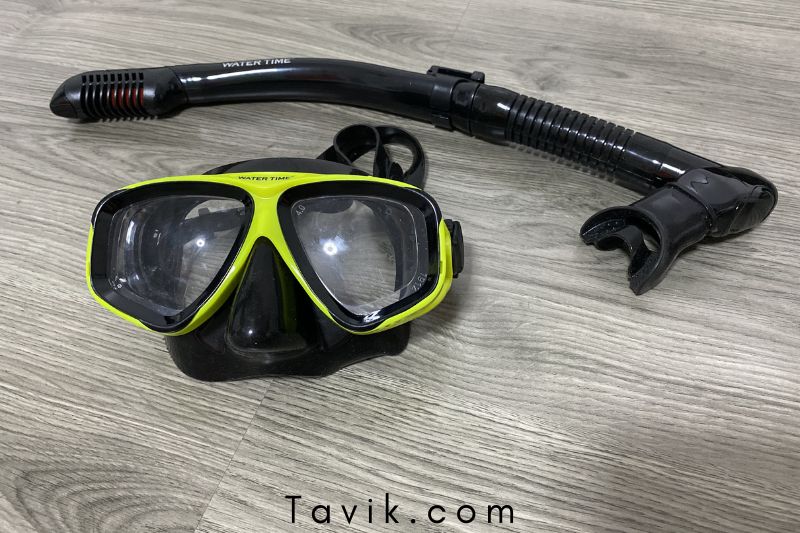
Before You Begin
A snorkel keeper clip or a silicone ring will secure your snorkel to your mask. Before you begin, ensure the snorkel keeper clip or ring is attached to the snorkel or mask. If you're using a snorkel keeper clip, you'll need to detach the mask's strap and connect the snorkel keeper clip to the mask's strap. Then, using the snorkel keeper clip connected to the side of the mask you picked, reattach the strap to the mask. If you're using a snorkel keeper ring, you'll need to attach one end to the snorkel before you begin, leaving the other end free until it's time to fasten the mask.
Step 1: Put On The Mask
When connecting a snorkel to a mask, the first step is to put on the mask and fix it in place as if you were going snorkeling. This will show you precisely where the snorkel should be attached for it to be most effective.
Step 2: Insert the Mouthpiece into Your Oral Cavity
After that, you'll insert the snorkel's mouthpiece into your mouth. Make sure the mouthpiece fits comfortably in your mouth since this will keep the snorkel's tube in the proper position when snorkeling.
Step 3: Put the Snorkel Tube in the Right Place
Once the snorkel's mouthpiece is firmly in your mouth, you'll need to adjust the snorkel tube's position so that it remains above the water for efficient and safe breathing. The most critical step in ensuring that the snorkel is properly linked to the tube is to place it. This will guarantee that the snorkel is in the optimum position for clear airways and dry snorkeling. At your temple, the snorkel should go up along your face. Divers must connect their snorkel to the left side of the mask, while snorkelers may put their snorkel on either the left or right side.
Step 4: Align the Snorkel and the Strap
It will need to be fastened at the spot where the strap and the snorkel meet, so make sure that this location is correct. Take your fingers and feel where the strap and snorkel meet while the mask is still on. This is where the snorkel will attach to the mask. Thus it must be accurate. If you're using a snorkel keeper clip, just slip it to the point where the snorkel and mask straps meet. This ensures that the snorkel is connected to the proper place and position for snorkeling. If you're using a snorkel keeper ring, just slide it to the point where the snorkel and mask strap join in, guaranteeing that the mask strap is properly linked to the snorkel.
Step 5: Remove the Mask
Carefully remove the mask while holding the snorkel and the mask together in your palm at the spot where they connect. The snorkel will be attached to the mask and snorkel at the spot where your hand is positioned. A ring or a clip may be used to attach the snorkel to the mask, but both systems need the same approach to ensure the mask and snorkel are properly linked.
Step 6: Connect the Snorkel
The snorkel will now be connected. If you're using a snorkel keeper clip, just connect the snorkel to the keeper clip through the connectors on the two parts. The snorkel keeper clip should include a quick-release button that removes the snorkel with only one touch. If you're using a snorkel keeper ring, you'll have to put in more effort than just joining two parts together to keep them in place. Instead, take the mask's strap and lay it against the snorkel to keep it in place right above the snorkel keeper ring. Take the free second ring and draw it up to the top of the snorkel and down the tube of the snorkel directly on top of the first ring while keeping the strap against the snorkel. When you let go of the mask, the snorkel keeper ring should hold it in place and link it to the snorkel. Follow the instructions in this article. Both the snorkel keeper clip and the snorkel keeper ring will be in the right position, so you shouldn't have to modify the position of the snorkel keeper device or the snorkel or mask itself.
Step 7: Put the Mask and Snorkel to the Test
Replace the mask and insert the snorkel's mouthpiece into your mouth. As though you were snorkeling, move your head around a little. The snorkel is correctly fastened if it remains in position and the snorkel keeper clip does not fall out.
Which Is Better For A Keeper: A Clip Or A Ring?
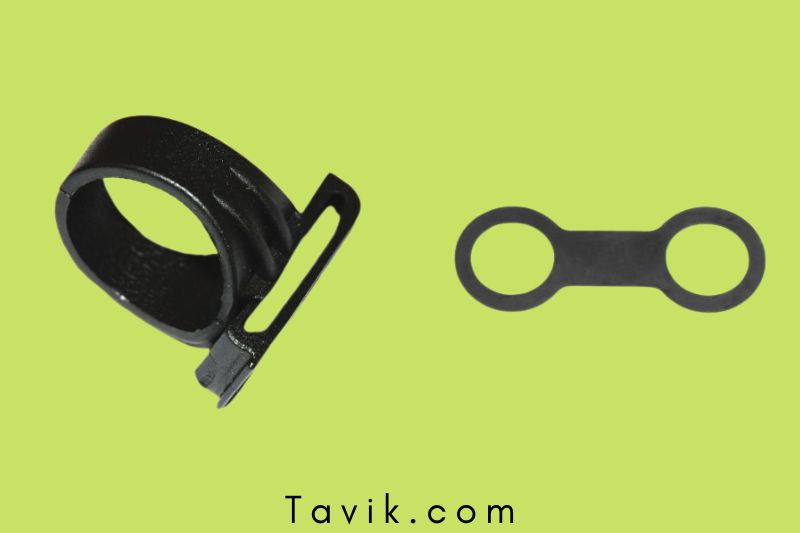 Both kinds of snorkel keepers have benefits and downsides. We'll go through the benefits and drawbacks of each so you can decide which way of fastening the snorkel is best for you.
Both kinds of snorkel keepers have benefits and downsides. We'll go through the benefits and drawbacks of each so you can decide which way of fastening the snorkel is best for you.
Clip for Snorkel Keeper
A snorkel keeper clip links the snorkel to the mask with a plastic clip. Advantages:
- It stays firmly in place.
- It doesn't slide.
- With the click of a button, the snorkel can be easily detached from the clip, allowing the clip to remain in position while just the snorkel is removed.
Disadvantages:
- Plastic is readily breakable.
Snorkel Keeper Ring
Snorkel Keeper Ring is a ring that is used to keep snorkels safe. A snorkel keeper ring is a silicone ring that attaches the mask to the side of the snorkel using a two-sided silicone ring that runs down the snorkel tube and holds the mask strap in between. Advantages:
- Almost indestructible
- Simple to use
- A fantastic alternative to using a snorkel keeper clip
Disadvantages:
- It can easily get dislodged, requiring you to redo the attaching procedure each time you use it.
Alternatives to Using a Snorkel and Mask Separately
Before each journey, you may not always have time to connect a snorkel to a mask. While we suggest always fastening your snorkel to your mask, you may also choose a full-face snorkel mask as an alternative to the snorkel + mask combination. A full-face snorkel mask has a snorkel integrated right into the mask. There is no need for a snorkel attachment since the snorkel is designed to be directly linked to the mask. A full-face snorkel mask covers both your nose and mouth, allowing you to breathe freely in any direction. For novices learning the fundamentals of snorkeling, a full-face snorkel mask is advised since they won't have to attach it to the mask or risk jaw fatigue while keeping the mouthpiece in their mouth.
Must-Have Snorkel Goggle Features
If you do decide to wear goggles when snorkeling, don't just grab the first pair you come across. Some of the features found on decent models will come in helpful underwater. Let's take a look at a couple of the most essential ones and why they're crucial:
- UV protection is provided.
- Anti-fog and anti-scratch protection
- Buckles that can be adjusted quickly
- Headband with a split
UV protection
Most goggles must be worn in an indoor swimming pool. When you're in the water, particularly on a tropical vacation, you'll have to contend with the sun. Would you spend hours in the sun without slathering on sunscreen? You'll need snorkel goggles with UV protection lenses to provide your eyes with the same level of protection. Don't take the chance of harming your eyes if the situation worsens.
Anti-fog and scratch-resistant goggles
Snorkeling with goggles is OK as long as you can see the fish and flora underwater. The largest stumbling block will be fogging lenses, which won't happen if you wear a full-face snorkel mask. When using snorkel goggles, it's far more likely to happen, so be sure they've been treated with anti-fog. Anti-scratch lenses are also included in this category. Your excellent vision will be obstructed if you have scratches all over your lenses.
Quick-release buckles
You'll have to squeeze your snorkel beneath your head strap. As you undoubtedly know, they weren't made with that in mind. Thus your snorkel will most likely wonder about a lot during the day. You'll be able to solve the issue much faster if you have rapidly adjusted buckles. More time spent admiring huge turtles and sharks that won't eat you alive equals less time spent fixing stuff.
Split head strap
After a few hours of swimming with a basic strap, your head will suffer. When snorkeling, it'll be considerably worse since pressure rises as you move deeper underwater. There is a really easy approach for you to relieve your discomfort. Check for a split head strap on your snorkeling goggles. It will hurt less since the pressure will be delivered across a larger surface area. If you're fortunate, you won't be bothered at all. v
Snorkeling With Goggles: How to Stay Safe
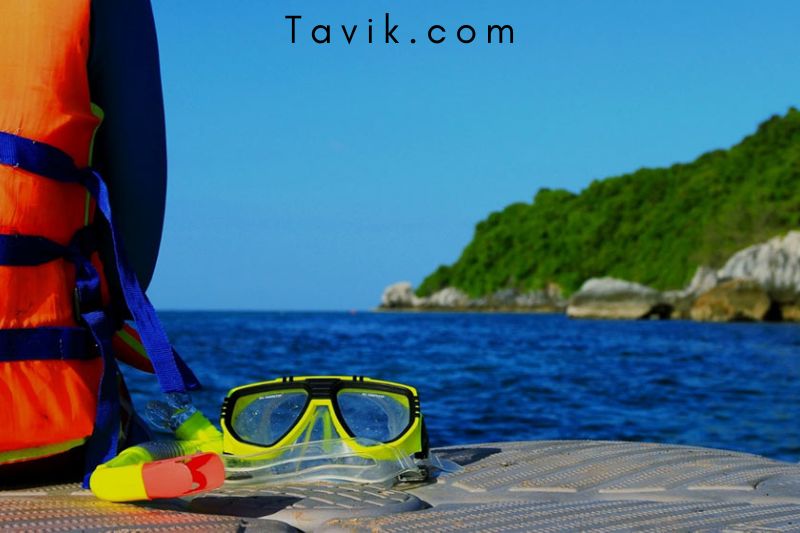 Any action in open water carries with it several risks. When you don't have the right equipment, though, it's a little riskier. Here are a few important safety precautions to remember:
Any action in open water carries with it several risks. When you don't have the right equipment, though, it's a little riskier. Here are a few important safety precautions to remember:
- Learn to maintain your composure.
- Wear decent snorkel fins
- Examine the weather at sea.
Learn to be calm
It's safe to assume that snorkeling wearing goggles increases the odds of things going wrong. Water may spill into your eyes or nose. You might lose control of your snorkel, leaving you unable to breathe for some time. In certain instances, you must learn to remain cool. If you keep cool, there's a strong chance you'll be able to get yourself out of any risky situations.
Wear decent snorkel fins
Staying calm is great, but if anything goes wrong, you'll want to go to the surface as soon as possible. You'll be able to breach the surface considerably faster if you use good snorkeling fins. You'll probably feel more self-assured now that you're wearing them. At present, Wildhorn snorkeling fins are a very popular option among snorkelers.
Check the weather
Don't go snorkeling in the water if the weather is bad. Learn to check the weather forecast before going snorkeling. But that isn't the argument I'm attempting to make. Snorkeling in difficult circumstances wearing goggles is a misery. Because of the waves slamming against it, you'll be tinkering with your snorkel for most of your time. Read also: How to Swim Without Goggles?
Conclusion
There are a few different ways to attach a snorkel to swimming goggles. The most common method is to use a clip that attaches to the goggle strap. Another method is to use a headband that goes over the top of the head and has the snorkel attached to it. Whichever method you choose, make sure the snorkel is secure before you get in the water. Thank you for reading!
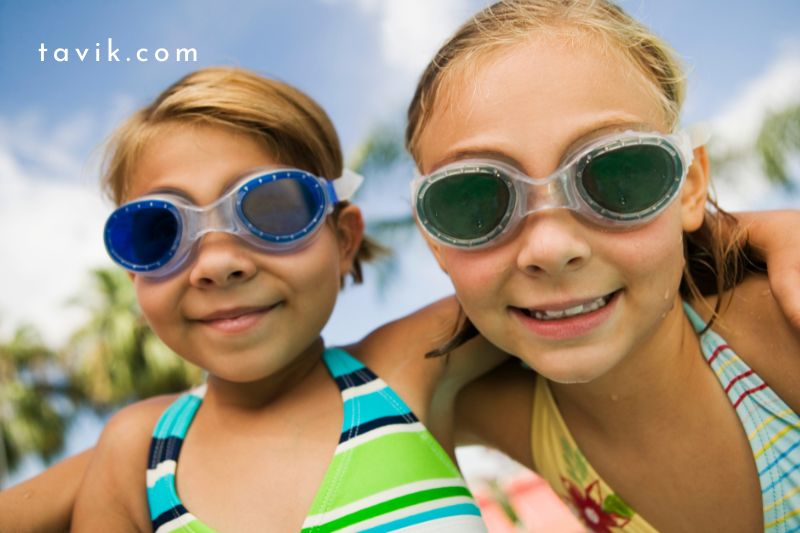
![How To Put On A Swim Cap: Best Ways To Keep It Secure [2022]](https://tavik.com/wp-content/uploads/2022/06/Types-Of-Swim-Caps.jpg)
